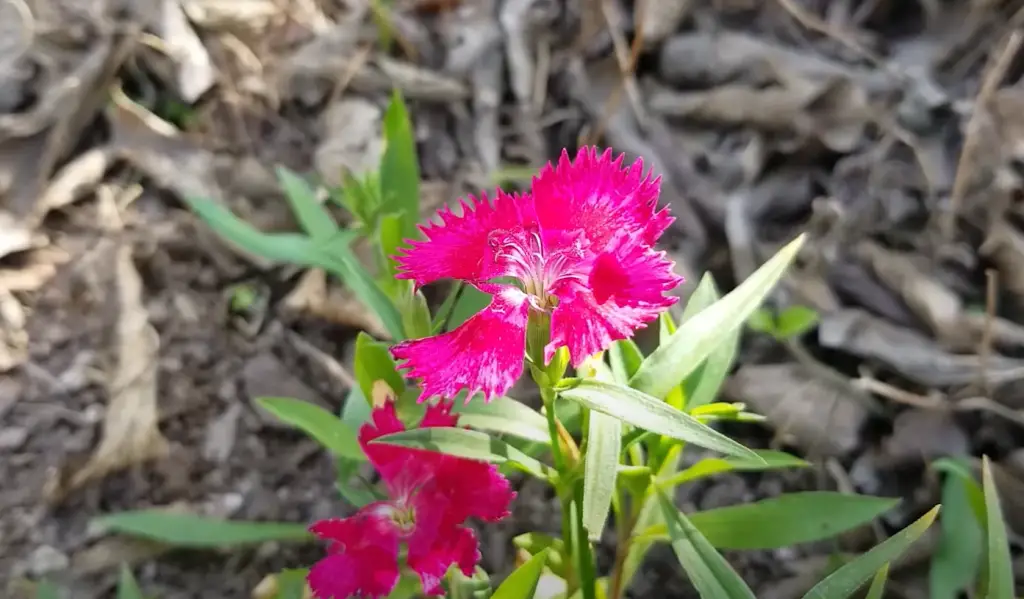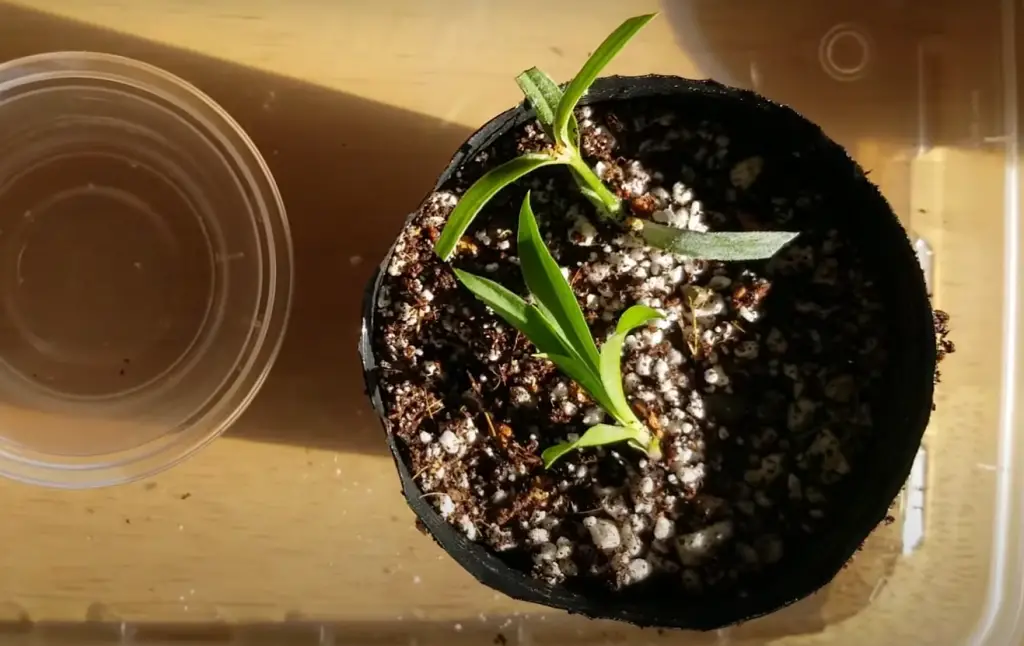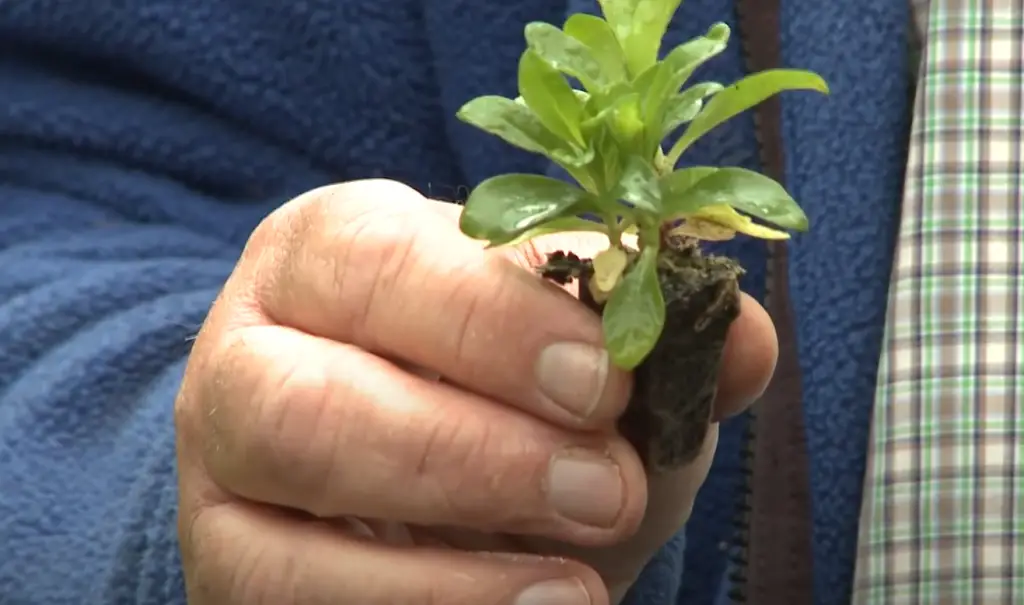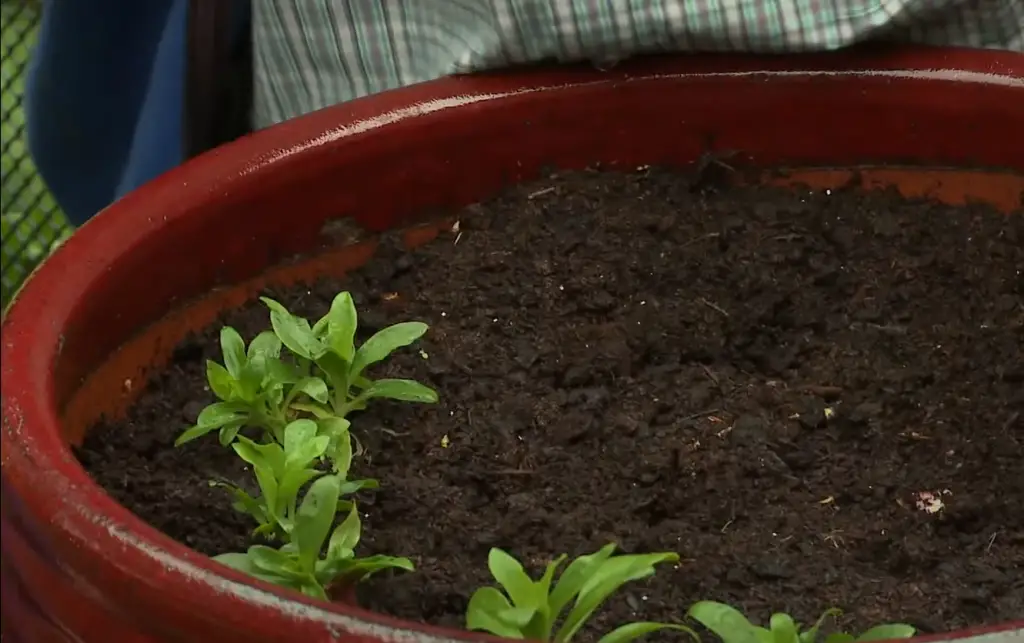Are you looking for an easy-to-grow, colorful flower to fill your garden? Sweet William, a stunning plant with beautiful pink to red blooms and delightful scent, is the ideal choice! This amazing perennial will not only bring vibrant color into your outdoor spaces but also provide great fragrance throughout the summer months. But how do you grow this exquisite flower? It’s easier than you might think and in this blog post, we’ll give you all the necessary tips on growing sweet William plants in your own garden. Learn about all the necessary steps for successfully growing sweet William flowers, including soil preparation, seed germination, and watering techniques, by reading this guide!
What is Sweet William?
Sweet William is a flowering plant that belongs to the genus Dianthus. It is native to many parts of Europe but is widely cultivated in gardens all over the world.
From late spring into summer, clusters of blooms appear at the top of each stem, attracting butterflies and other pollinators.These tough little plants thrive in full sun or partial shade with well-draining soil that’s slightly acidic to neutral. Once established, they don’t need much care beyond regular deadheading and occasional division if needed for a larger patch of color. With minimal effort, sweet Williams can bring a splash of vibrant color to the landscape for many years. [1]
History of Sweet William Plant
Though its origin is unclear, the Sweet William plant (also known as Dianthus barbatus) has a long history of being grown in gardens. Its unique combination of showy flowers and fragrant foliage have made it a favorite among gardeners for many centuries. The plant was even mentioned by Shakespeare in his play “The Winter’s Tale” which was written in around 1610-1611.

Sweet William plants are native to Europe but were brought to North America during colonial times when settlers used them to decorate their gardens and homes. In the Victorian era, they gained popularity due to their bright colors and sweet scents which were seen as symbols of love and fidelity. It was traditional for brides to carry Sweet William in their bouquets on their wedding day and for grooms to give a single Sweet William flower to the bride as a token of their love.
Today, Sweet William plants are still popular and can be found in many gardens around the world. They come in a variety of colors including white, pink, purple, red, and yellow. The flowers have an old-fashioned charm that adds beauty and fragrance to any outdoor space. With proper care and attention, they will continue to thrive for many years!
Description of the Plant
Sweet William (Dianthus barbatus) is a flowering perennial plant that belongs to the Caryophyllaceae family. Its bright, fragrant flowers are often found in gardens and flower beds. The plant has long, slender stems with lance-shaped leaves and clusters of small, scented blooms in shades of pink, purple, red or white. Sweet William plants can grow up to 2 feet tall and spread out about 12 inches wide. They thrive in cooler climates but may need protection from strong winds. It’s an excellent choice for rock gardens or as cut flowers for bouquets.
Planting and Spacing Requirements
Soil Preparation
Sweet William plants prefer a well-drained, slightly acidic soil with a pH of 5.5 to 6.5. The soil should be worked deeply before planting and enriched with compost or aged manure for best results.
Sunlight Requirements
Sweet William plants need full sun and at least six hours of direct sunlight daily. If your plant is not getting enough light, it will become leggy (the stems become long with fewer leaves). You can give the plant more light by moving it to a sunny spot in your yard or giving it supplemental lighting indoors.

In addition to full sun, Sweet William plants also benefit from indirect light during the summer months when temperatures are high. So if you live in an area with hot summers, try to provide some shade for your Sweet Williams by planting them close to other taller plants that can offer some protection from the sun’s rays. [2]
Water Requirements
Sweet William plants need to be watered regularly. You should water your plant deeply and then allow the soil to dry out between watering sessions. This will ensure that the roots are not overwatered, which can lead to root rot. You can check if your Sweet William needs water by sticking your finger into the soil up to your first knuckle; if it’s still damp, you don’t need to water it yet. If the soil is dry, give it a good soak until you see moisture coming through the drainage holes in the bottom of the pot. Always discard any excess water from trays or saucers so that your Sweet William doesn’t become oversaturated with moisture.
Fertilizer Needs
Sweet William plants benefit from regular fertilizing.
During the winter months, you can reduce fertilization to once a month. Make sure to follow the instructions on your fertilizer packaging for proper application and dosage. Overfertilization can cause foliage discoloration and root burn in Sweet William plants, so it’s important to use only as much as is necessary.Caring for Sweet William Plants
Pest Control Measures
Sweet William plants are susceptible to aphids, mites, slugs, and caterpillars. Regularly check your plants for signs of pests and take appropriate measures such as spraying with insecticidal soap or Neem oil.
Pruning and Deadheading Techniques
Pruning and deadheading your Sweet William plants will help keep them looking healthy. Pruning can be done in early spring to promote bushier growth.

To prune, cut back one-third of the stems at their base. Deadheading is removing spent flowers from the plant as they fade. This encourages new blooms and helps maintain a neat appearance. Deadheading may need to be done several times throughout the growing season for some varieties of Sweet William. Both pruning and deadheading should be done with clean, sharp shears or scissors to ensure a smooth cut that won’t damage the plant’s foliage or stems. [3]
Propagating the Plants
Sweet William plants can be propagated by division in the spring. Start by digging up the plant and gently separating its root clump into smaller sections with a sharp knife or garden spade. Plant each of these sections in separate pots filled with soil and water them well. Place the newly-planted divisions in a sunny location with temperatures between 65 to 75 degrees Fahrenheit. Keep the soil moist but not soggy, and your Sweet William should take root within several weeks. After it has grown for a few months, transplant it into an outdoor bed or patio container.
Common Problems with Growing Sweet William Plants
Disease Issues
Sweet William plants can be susceptible to a number of diseases such as mildew and root rot. These problems can be avoided with good air circulation and by avoiding overwatering or heavy watering.
Insect Infestation Problems
Sweet william plants are prone to insect infestations, which is why preventing them from taking hold in the first place is critical. To do so, practice good garden hygiene and keep a lookout for signs of bugs.
Keep in mind that organic options exist as well if chemical treatments aren’t your preference. Additionally, regular pruning can help to thin the plant out so that air circulation between its branches improves and keeps pests away. Lastly, planting companion flowers near sweet williams can attract beneficial insects which can help combat potential infestations naturally.What Is the Difference Between Sweet William and Dianthus?
Sweet William and Dianthus are both members of the Caryophyllaceae family, but they aren’t completely interchangeable. Sweet William (Dianthus barbatus) is an herbaceous perennial flowering plant noted for its clusters of fragrant, brightly-colored blooms in shades of pink, red, purple or white. It typically grows to about 12 inches tall and may be grown as an annual if it doesn’t survive the winter in cold climates.

In contrast, Dianthus (Dianthus spp.) is a genus that contains many species and varieties of plants with bright flowers in shades of red, pink or white. These can include biennials such as cheddar pinks and sweet williams; evergreen perennials like border pinks and catchfly; or annuals such as carnations. Dianthus plants generally grow to about 12-15 inches tall, but some species can reach up to 2 feet in height. [4]
When it comes to growing sweet william and dianthus, both prefer well-draining soil with a neutral pH balance and need plenty of sun. They also require regular watering and mulching during the summer months. Sweet William is more tolerant of cold temperatures than dianthus, however, so if you live in a cooler climate consider planting them together for added protection against extreme weather conditions.
Overall, sweet william and dianthus are both beautiful flowering plants that make great additions to any garden but they are not the same. Sweet William is a specific species of dianthus, so if you want to be sure to get sweet williams when planting, make sure they’re labeled as such before buying.
Are There Different Types of Sweet William?
Yes, there are several different varieties of Sweet William plants. Commonly found varieties include Dianthus barbatus (‘Sooty’), Dianthus caryophyllus (‘Clove Pink’), and Dianthus gratianopolitanus (‘Grenadin’). Each variety has its own unique characteristics, from flower colors to growth habits. ‘Sooty’ features small purple-black flowers with a sweet clove scent, while ‘Clove Pink’ has deep pink blooms with a spicy fragrance. The biennial ‘Grenadin’ produces clusters of fragrant, short-stalked white flowers in the summertime. Whatever type of Sweet William you choose to grow, you’ll be sure to enjoy the beauty and scent of these delightful plants! [5]
FAQ
Where do sweet williams grow best?
Sweet William plants prefer a location that gets plenty of sun, preferably 6-8 hours of direct sunlight per day.

They also thrive in well-drained soil with some organic material and a pH range between 6.5 – 7.2. Be sure to provide your sweet williams with enough water so they don’t dry out.
Are sweet williams annual or perennial?
Sweet William plants are biennial flowers, meaning they take two years to complete their life cycle before dying off naturally. In the first year, the plant grows only foliage and helps establish strong roots for flowering in its second year when more energy is directed towards blooming rather than vegetative growth.
How often should I water my sweet williams?
In the summer when the weather is hot and dry, your sweet william plants should be watered about once a week. However, if there is a lot of rainfall they may not need to be watered as often. In the winter and spring months, water every 2-3 weeks or when the soil feels slightly dry.
Do sweet williams need fertilizer?
Yes! Sweet William plants benefit from supplemental nutrition throughout their growing season. Use a balanced fertilizer such as 10-10-10 at half strength (follow manufacturer’s instructions for application rates) and apply it every two weeks beginning in early spring until late summer. Be sure to avoid fertilizing during cold or very wet periods.
Can you grow Sweet William from cuttings?
Yes, it is possible to grow Sweet William from cuttings. Cuttings can be taken in late summer or early fall and should be 2-4 inches long. The cutting should have two sets of leaves, with the lower set removed. Dip the cutting into a rooting hormone and plant in moist soil or potting mix. Keep the soil slightly damp and place in a bright spot but away from direct sunlight until new growth appears. Transplant when large enough into the garden or containers outdoors after all danger of frost has passed.
How do you grow Sweet William from seed indoors?
Growing Sweet Williams from seed indoors is a fairly simple process. All you need are Sweet William seeds, a container with drainage holes, potting mix or seed-starting mix, and bright light. To get started, fill your container with the potting soil or seed-starting mix. Moisten the soil before planting the Sweet William seeds. Plant two to three seeds per inch of depth in the soil and lightly cover with additional soil. Water gently until the surface is damp but not soggy. Place your container in a location with bright, indirect sunlight and temperatures between 70°F (21°C) and 75°F (24°C). The seeds should start to germinate within seven to 10 days. Once the seedlings are a few inches tall, thin them out so that only one plant remains per inch of planting depth. Keep the soil evenly moist and fertilize regularly with an all-purpose liquid fertilizer to encourage strong growth. When the plants reach a height of 6 to 8 inches (15 to 20 cm), transplant them outdoors into flower beds or containers for further growth and blooming.
Is Sweet William a perennial or annual?
Sweet William is a biennial plant, meaning that it takes two years to complete its life cycle. In its first year, Sweet William produces mainly leaves and stems. In the second year, the plant flowers and sets seed before dying back. As a result, Sweet William plants are usually treated as an annual in gardens. If they are allowed to reseed themselves, they may reappear in subsequent seasons from self-sown seedlings.

However, it is important to note that these offspring will not necessarily be true to species due to cross-pollination with other types of Dianthus. For this reason, many gardeners prefer to start fresh each season by purchasing new plants or propagating their own.
Can Sweet William be dried?
Yes, Sweet William can be dried for use in flower arrangements or wreaths. To dry Sweet William, cut the flowers when they are just beginning to open and hang them upside down in a dark airy place until they are fully dry. Once completely dry, remove the stems and store the flowers in an airtight container away from direct sunlight to preserve their color and shape. With proper drying techniques, your Sweet William blossoms will last for many years.
The dried blossoms also make beautiful additions to potpourri blends with other fragrant herbs and flowers. For a more contemporary arrangement, consider adding some of the unique colors of Sweet William like yellow, orange or purple that provide vibrant accents amongst traditional white hues. No matter how you choose to use your Sweet William, these beautiful and fragrant blossoms will surely add a touch of elegance to any arrangement.
Do snails like Sweet William?
No, snails do not like Sweet William plants. In fact, Sweet William is a great plant choice for gardeners who want to deter snails and other pests because it contains chemicals that are toxic to them. However, these chemicals are not harmful to humans or other animals. The best way to keep snails away from your Sweet William plants is to use companion planting methods with other insect-deterring plants such as chives and garlic. Additionally, you may want to consider using snail barriers around the base of the Sweet William plants or setting up traps with beer or grapefruit rinds in order to reduce their presence in your garden. With vigilance and the proper precautions, you can enjoy a healthy crop of Sweet William without fear of snail infestation.
Useful Video: How to Plant Dianthus Barbatus (Sweet William): Winter/Spring Guide
Conclusion
Sweet William plants are an easy-to-grow perennial that will reward you with months of beautiful blooms in a variety of colors. They are great for any garden, and their hardiness makes them ideal for beginning gardeners or those who have limited time to devote to their gardens. With the right care and attention, these stunning flowers can be enjoyed year after year. If given ample water, plenty of sunshine, and some special fertilizing now and then, Sweet Williams will thrive and bring your garden alive with vibrant color!
References:
- https://www.rhs.org.uk/education-learning/gardening-children-schools/family-activities/grow-it/grow/sweet-williams
- https://www.gardeningdirect.co.uk/blog/how-to-grow-sweet-william.html
- https://www.thespruce.com/sweet-williams-growing-guide-5200995
- https://gardenerspath.com/plants/flowers/grow-sweet-williams/
- https://www.flowerpatchfarmhouse.com/how-to-grow-sweet-williams/










Leave a Reply
View Comments